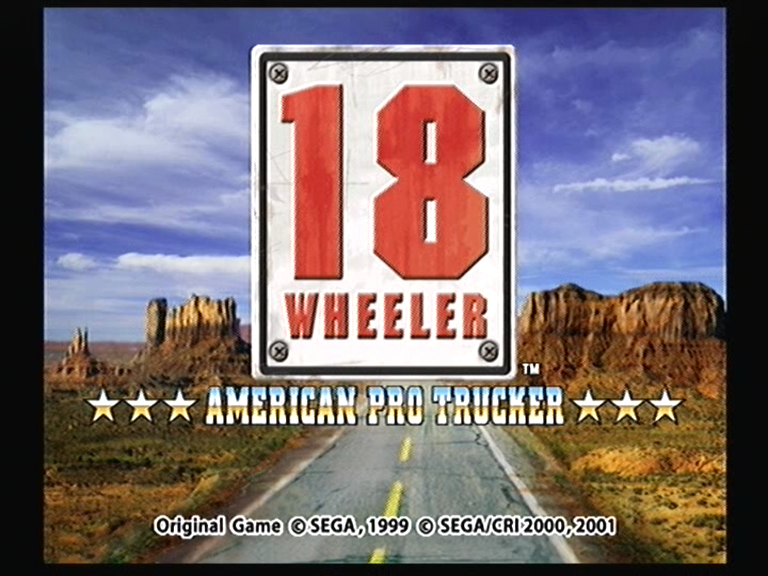Dreamcast, 2000 by Sega.
It was developed as part of Sega’s ‘real life career’ series of Naomi arcade games but don’t let that fool you – 18 Wheeler is about as true-to-life as After Burner.
Sat behind the humongous wheel of a ‘big rig,’ your goal in this game is to safely transport increasingly weighty cargo from station to station across the United States, all the while contending with natural hazards such as tornadoes and rolling boulders, traffic congestion and a rival driver called Lizard Tail who smashes into you, tips boxes in your path and insults you via CB radio.
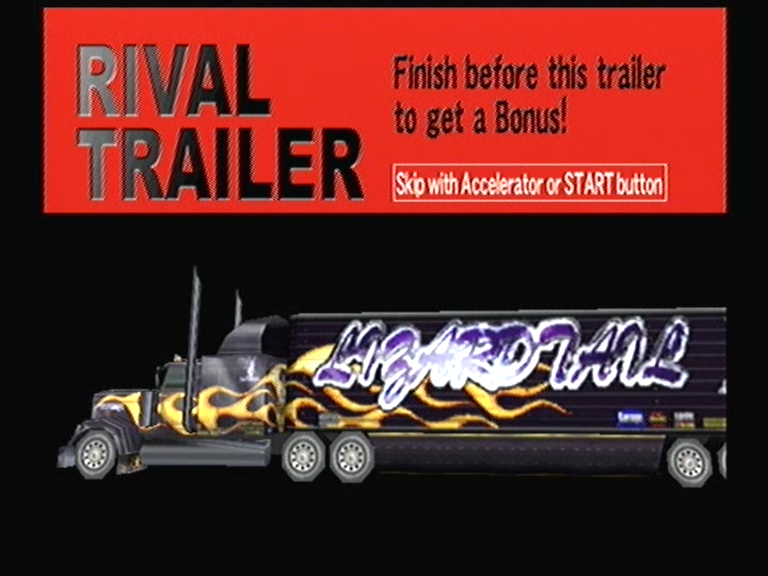
The Dreamcast version features additional parking challenges, two-player duel and score attack as well a precise conversion of the arcade mode, but without the lure of that bright red sit-in cabinet replete with gears, horns and pedals (not to mention a huge screen) is there enough to this package to make it an essential?
Well, the answer is a definite “yes”.
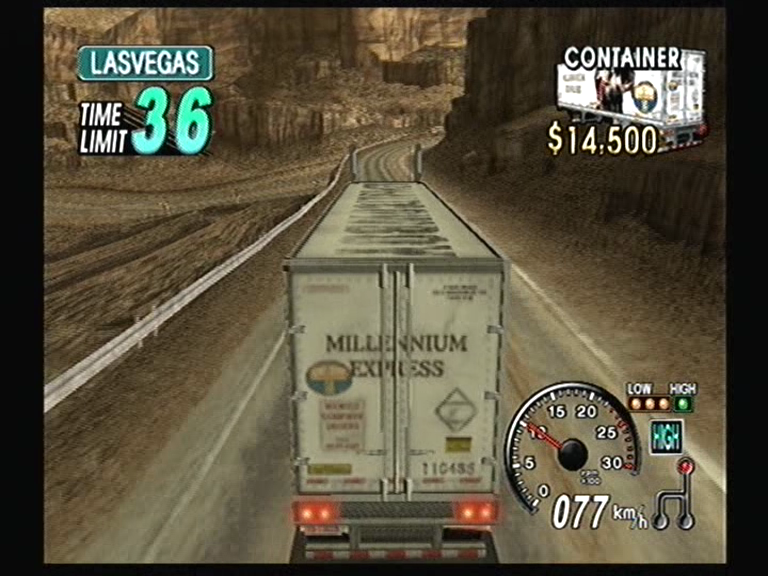
18 Wheeler is a great game which loses nothing in transit but gains nothing either, as the new features mentioned above do little to embellish it – arcade mode consists of four courses with four drivers to choose from and make no mistake about it, if you’re buying 18 Wheeler it’s for this mode and this mode only.
And while the game isn’t too difficult or complicated it does have its share of nuances to explore.
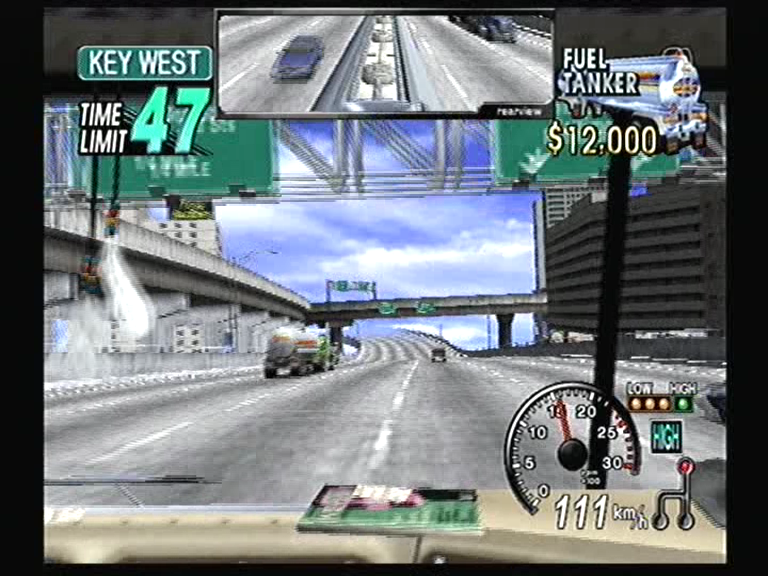
Its basic formula is derived from previous Sega AM2 games like OutRun and Hang-On, albeit with a significantly slower and less nimble vehicle.
On each track your main goal is to beat the clock and reach your destination, hitting time-extend checkpoints and smashing marked ‘bomb cars’ for bonuses of up to three seconds.
The margins are very tight and every mistake you make – such as touching other traffic, failing to change gear at the right moment or going off-road across gravel – will slow your truck significantly and jeopardize your chances of victory.
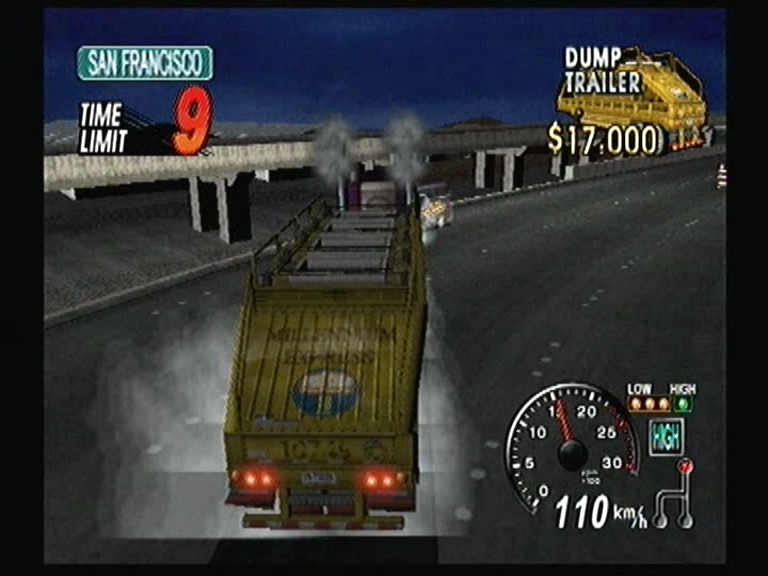
Traffic patterns tend to be quite unpredictable but with prolonged blasts of the horn you can direct cars out of your way. Usually they oblige.
Slip-streaming is vital for getting the rig up to speed and is achieved by lining up directly behind another truck (most roads are marked with lanes to make this easier) for a few seconds before being catapulted past them.
The effect works on any truck of equal size to your own, including Lizard Tail’s.
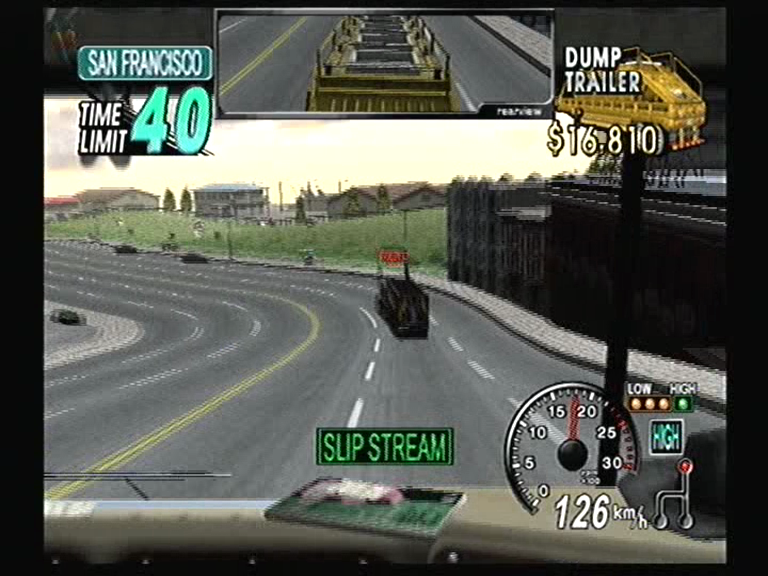
To take full advantage of the slip-stream, players will have to constantly survey the road ahead for large trucks and plan the best way to weave from one to the next and catch every opportunity.
What can be frustrating, however, is that the effect will inconsistently take longer to kick in, or not kick in at all until you’re too close to the truck ahead and simply slam into it.
Gutsy slip-streaming is all well and good but to score big players must also look after their precious cargo.
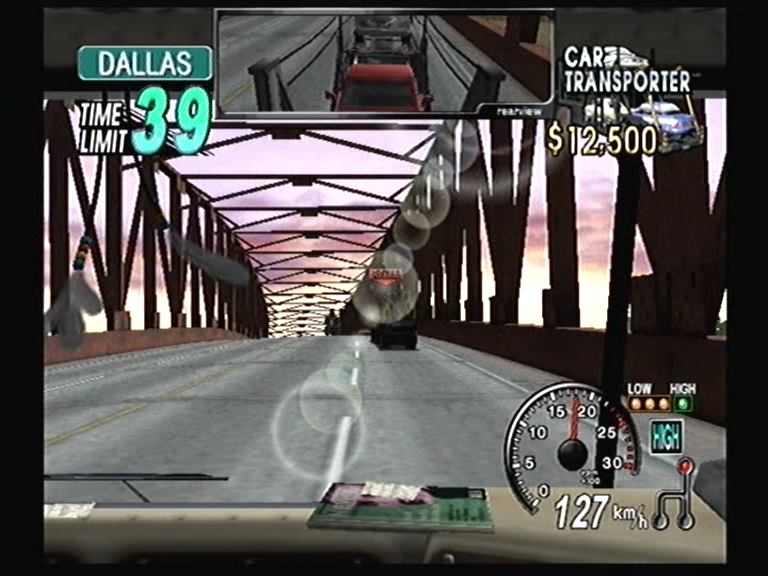
The value of your load is recorded in dollars on the top right of the screen and any contact with cars or scenery will see that figure tumble, and naturally Lizard Tail will go out of his way to smash up your goods.
Before each stage begins a choice of two trailers are available, one easy and one hard with obvious differences in weight, length and of course value.
Some drivers are better equipped to haul heavy cargo but in turn lack speed.
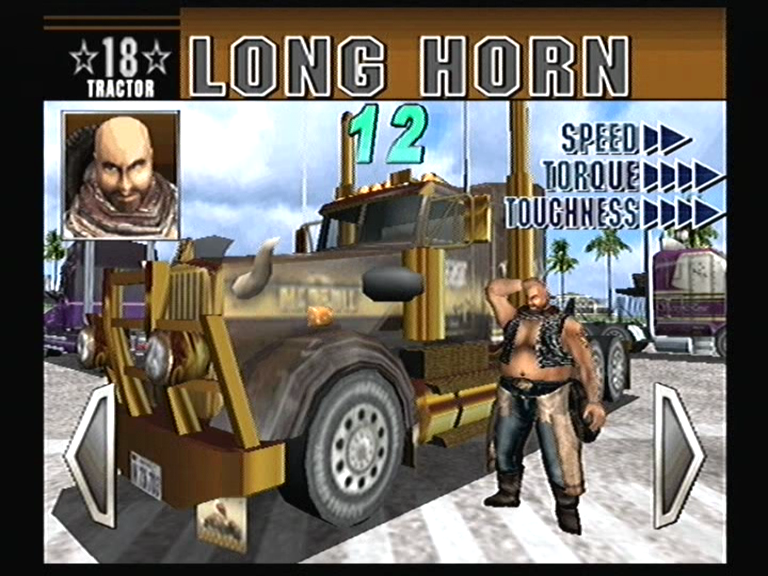
Long Horn for example features maximum power, which makes him the best choice for bagging serious cash, but he’s also very slow – if however you’re just interested in clearing the game, the sprightly Highway Cat is the best choice of character.
Time remaining after hitting the goal also factors into stage-end scoring, as does the number of lamp-posts you crush on your way around the track.
By finishing ahead of Lizard Tail in each of the first three courses a bonus parking game can be accessed, where the player is challenged to drive through some narrow streets and stop in a marked bay.
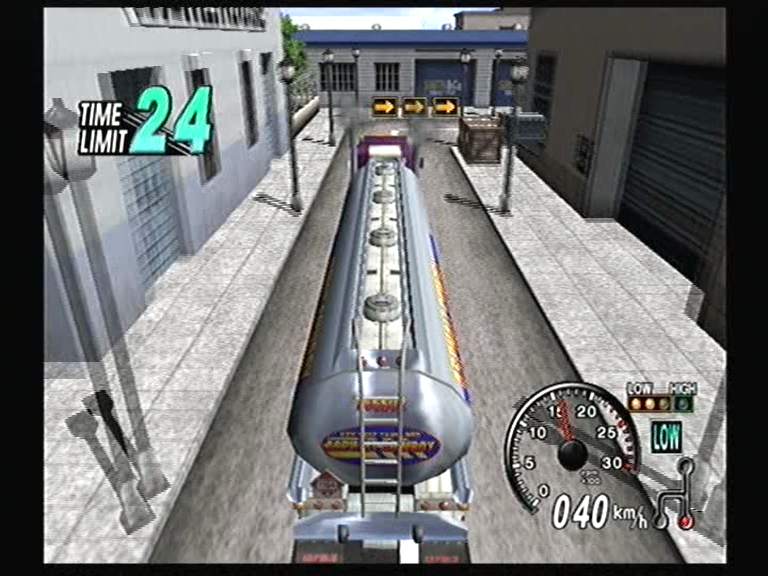
The first two are extremely easy but the third, which involves reversing down a hill, is quite tricky – once the truck doubles up it’s almost impossible to rectify.
As a reward for finishing each challenge the player will “Got a new parts!” which power up a particular aspect of the truck and prove very useful on the final stages where every move is crucial.
Those lovely, crisp graphics only add to 18 Wheeler’s appeal – perhaps not as much as they did back in 2000, but it still remains a beautiful-looking title (to my eyes at least, try as I may to resist the tint of nostalgia).
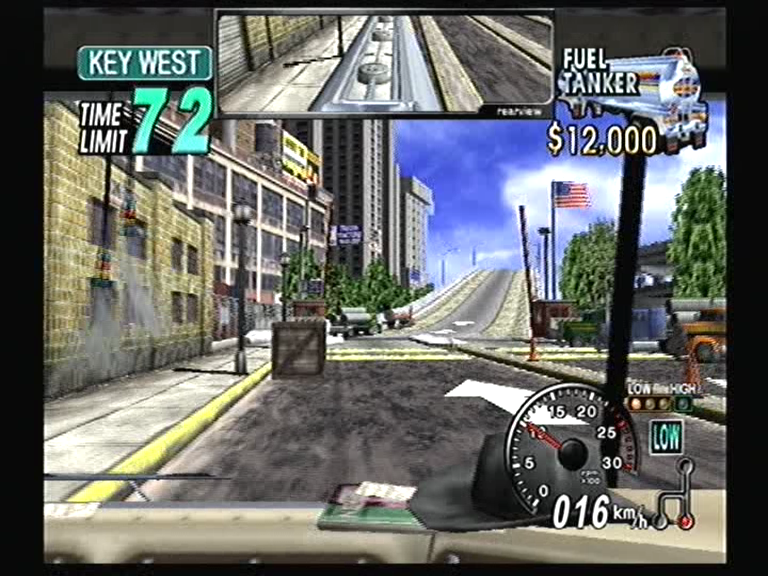
Each of the four environments are nicely modeled and although the action is mostly channeled along narrow roads, the scenery around them is always busy with detail, taking you from city highways surrounded by skyscrapers to the dramatic mountainside at sunset.
There are also some nice touches such as lens flares and objects sliding across the dashboard in first-person view, plus of course the hurricane in stage two which tears through houses on the roadside, scattering debris in your path and forcing quick reactions.
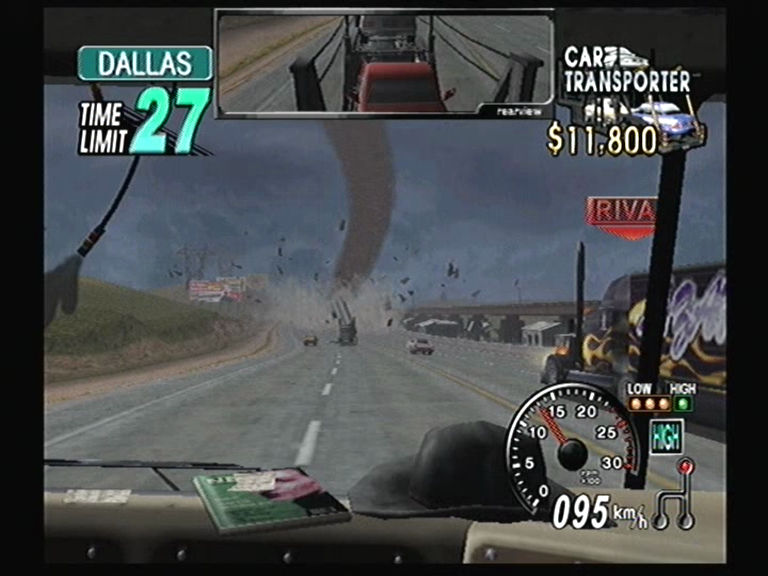
However, scenery very noticeably fades into view as it’s needed, often leaving flat skylines in the distance and at times blank white voids – not a problem inherited from the coin-op.
And while each stage forks into a couple of alternate pathways the impact of the choice is minimal, with both usually ending up the same length and difficulty, and the only tactical choice being the option to avoid a steep incline on stage three.
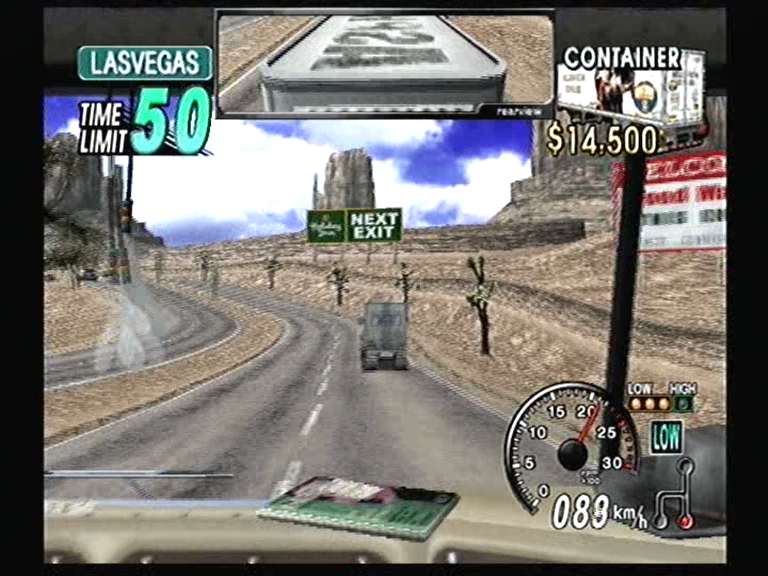
As for those home console version extras, they really aren’t worth much attention.
The parking challenges, which are a nice interval in the main game (and quite tense when there’s an upgrade at stake) aren’t much fun on their own, while score attack and versus are poor attempts at grafting in a race mode.
As with the majority of ‘original modes,’ VMU mini-games, ‘boss battle modes’ etc. that were frequently dropped into Dreamcast ports to boost their perceived value, 18 Wheeler’s are totally unnecessary baggage.
If the Dreamcast version has one particular advantage over the arcade it’s the lack of that ridiculous steering wheel.
FINAL GRADE: [C]
